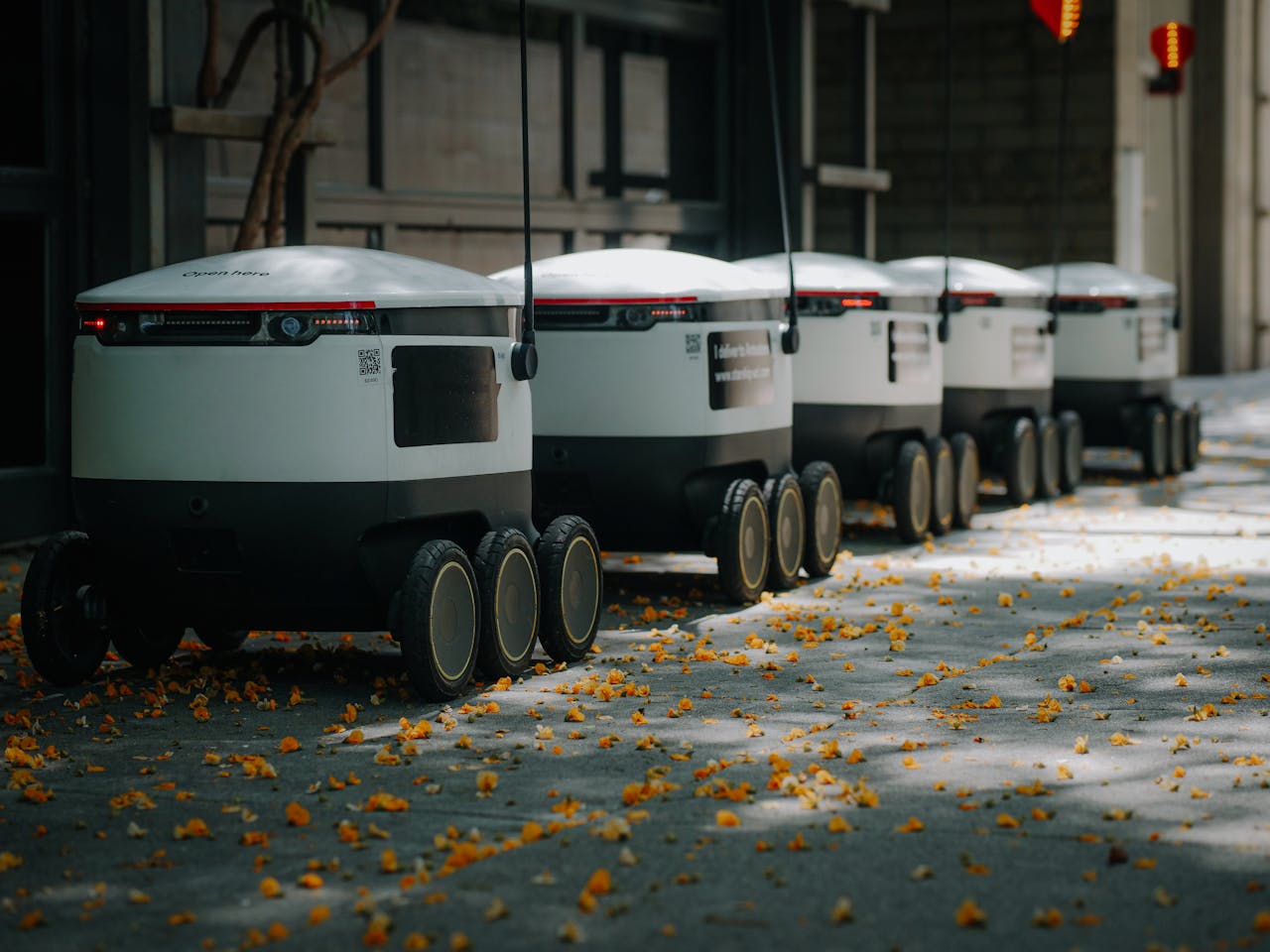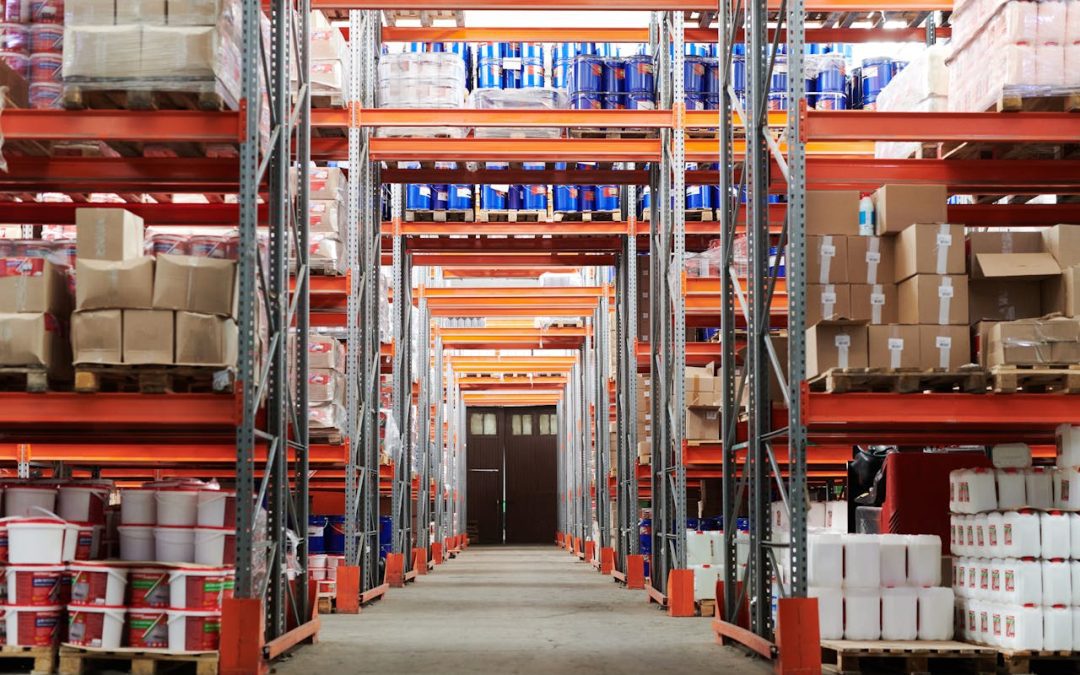Warehouses are ginormous. They need to be able to store millions of goods at any one time; it’s what they’re designed for!
With that purpose comes a big downside – the environmental impact. Warehousing uses a lot of gas and electricity as well as producing plenty of waste.
At a time when a shift toward sustainability and greener practices is essential, warehouses are making significant changes. Let’s take a look at what some of those changes are…
The Role Of Warehousing In Freight
Warehouses play a crucial role in the efficient functioning of a supply chain.
Built for storing goods or raw materials before their distribution for sale, warehouses are used by manufacturers, wholesalers, importers, exporters and even customs. Here are 5 ways in which warehousing supports logistics operations…
Storage
A warehouse offers users a central place to store goods. This helps with inventory management, especially around important dates and seasons like Christmas, and reduces lead times.
Distribution
Using centralised warehouses, businesses can improve the efficiency of their distribution process and get goods to customers quicker and cheaper.
Fulfilment
Using a warehouse to store goods also streamlines picking, packing, and shipping customer orders efficiently.
Packing And Labelling
Some warehouses offer a packing and labelling service in addition to picking and grouping goods ready to send.
Energy Efficiency: The Power of Saving Power
Warehouses gobble up energy thanks to their size and 24/7 operations, but there are ways this can be reduced.
Lighting
Standard warehouse lighting uses a tonne of electricity. Making the switch to LED lights, motion sensors that are triggered by movement or smart lighting systems can significantly reduce electricity usage.
Heating & Cooling
Warehouses are huge, lofty buildings. Keeping them cool in the summer and warm in the winter takes a lot of energy.
Modern HVAC (heating, ventilation and air conditioning) systems are energy efficient and help to regulate the temperature for larger spaces. Improved insulation is also important to protect product quality and reduce the risk of condensation.
The John Lewis Partnership installed a high-tech building management system that runs cooling, heating and lighting. Responding to weather data and the occupancy level of the building, this smart system has made significant energy and cost savings and enhanced the working environment.
Renewable Energy
Installing solar panels on warehouse roofs can generate clean energy and offset electricity costs.
Grocery giant Ocado has a highly automated warehouse in Erith, South East London. With 20,000 solar panels adorning its roof, this warehouse makes enough electricity to meet a huge chunk of its energy needs. Just by sitting there soaking up the sun!
Waste Reduction: Reduce, Reuse, Recycle!
Warehouses produce a lot of waste products. There are several ways in which warehouses can reduce this, including…
Rethink Packaging
To improve sustainability around packaging, warehouses can use recyclable or reusable materials and containers for internal transport. They also remember the importance of correctly sized packaging to help bring down waste levels. Here are some greener packaging options we’ve seen in use:
- Recycled card
- Biodegradable packing peanuts
- Paper-based void fillers rather than polystyrene
- Reusable packaging like recycled plastic or wooden pallets

Waste Management
What happens to the waste a warehouse produces?
Proper waste segregation and recycling programs within a warehouse are vital to prevent waste items from unnecessarily making it to landfill.
Frugi is one UK company among others that has heartily embraced its greener ways. They use fully sustainable packaging, including recycled cardboard, biodegradable bags, and paper tape.
Water Conservation
It might not spring to mind, but water usage is high in warehouses with lots of people, machinery and goods. Here are a few ways warehouses reduce consumption.
Check For Leaks
In such a big building, leaks can go unnoticed. Regular checks for leaks in water pipes and bathrooms help avoid wasting water. Leak detection systems make it easy to keep on top of leaks.
Efficient Cleaning
An efficient pressure washer for hosing down equipment uses less water.
Rainwater Harvesting
Some warehousing operations collect and use rainwater for cleaning and other purposes. By installing what is effectively a giant water butt, warehouses can use less metred water, save money and be more sustainable.
Smart Technology: A Digital Intervention
Technology can revolutionise several aspects of warehousing, such as energy efficiency and inventory management.
WMS
Using a warehouse management system, or WMS, enhances a warehouse’s performance by tracking products in real-time, automating manual processes and providing full visibility of warehouse operations.
Automation & Robotics
Warehouses that utilise automated systems and robots benefit from streamlined operations, fewer incidents arising from human error and reduced energy consumption.
Warehouse robots have advanced power management systems that track energy usage and change the way energy is being used to remain efficient throughout the day.
Step into an Ocado warehouse, and you’ll see plenty of robots zooming around, fulfilling orders, optimising storage space and reducing reliance on manual task completion.

Sustainable Warehousing Brings Business Benefits
Utilising green warehouse practices positively impacts your business’s sustainability and eco credentials. If the whole chain does its bit, we can all make a big difference in freight’s impact on the environment.
Millennium is committed to supporting eco-friendly freight operations. Find out more about us and get in touch.

